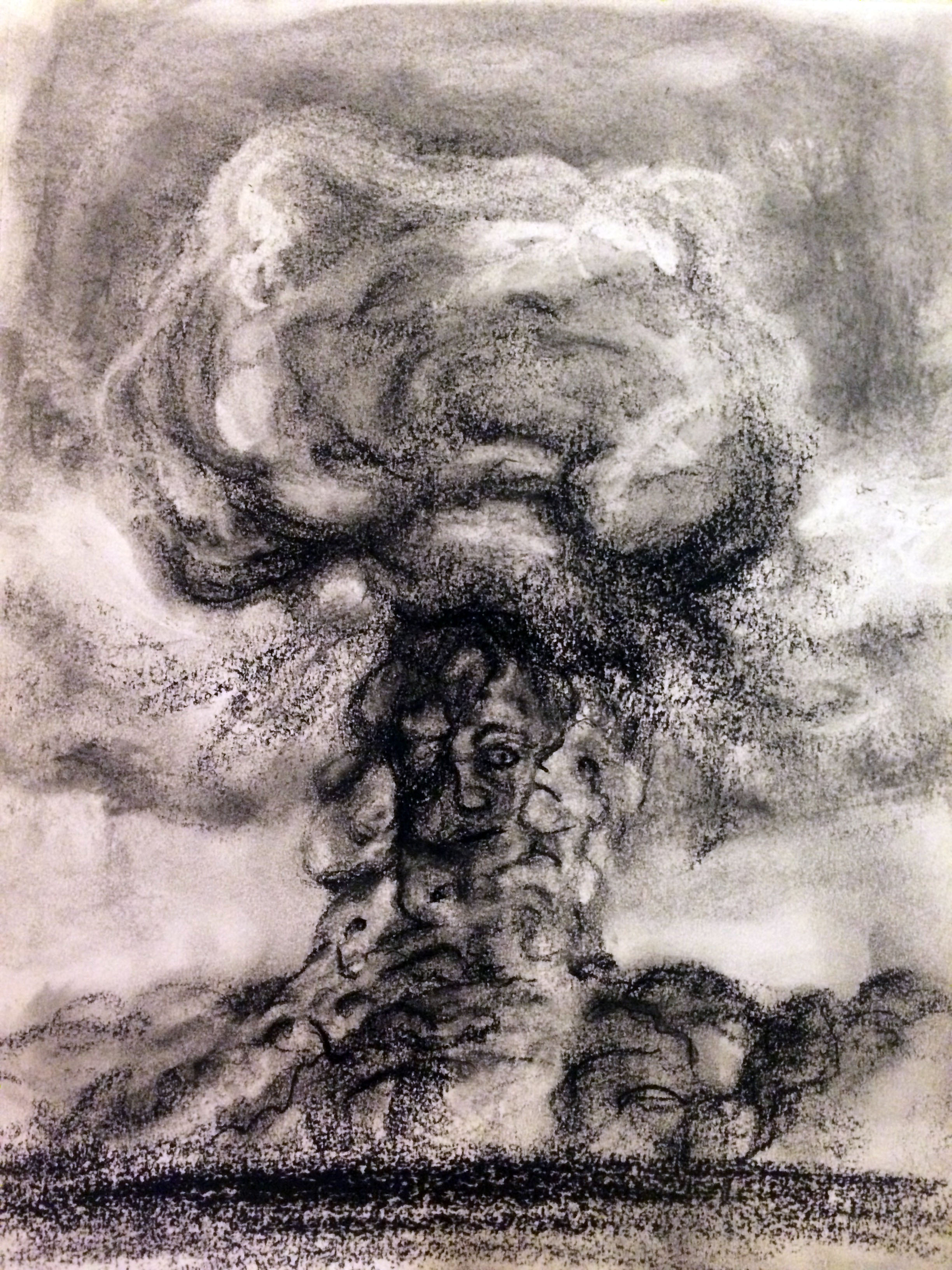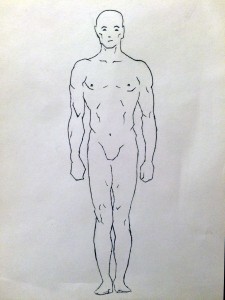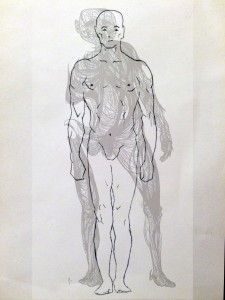“The Hydrogen Man” Leonard Baskin
Woodcut
MoMA
In 1954 the United States set off a hydrogen bomb, Castle Bravo, which at the time was the most powerful nuclear device ever detonated by the U.S. The bomb was tested in the Marshall Islands. That year, Leonard Baskin produced The Hydrogen Man as a response to the action.
I chose this piece because it caught my attention at the MoMA and when I read the wall text, I was even more interested. I thought the lines were beautiful, but still there is something haunting about the figure (which I liked).
In the deconstruction process of The Hydrogen Man, the human figure itself is very important. Baskin manipulates the figure to show the damage done by hydrogen bombs. I used Photoshop to highlight the differences between the human figure and the human figure Baskin’s Hydrogen Man.
In Baskin’s piece, the figure has his blood vessels exposed due to the bomb. I chose to draw the blood vessels as a physical deconstruction.
To understand the hydrogen bomb and the damage it causes, I relearned some chemistry and researched nuclear fission (which the reaction in the hydrogen bomb). I positioned the reaction to look like the explosion and recreated scenery to give context.
I put human faces in the explosion to represent how the bombs affect human life. The bomb didn’t just cause damage to the land that could easily heal. It caused a long term damage to the land and to human life because of radiation and also the physical destruction of the environment.
“Our human frame, our gutted mansion, our enveloping sack of beef and ash is yet a glory.” – Leonard Baskin
This drawing represents the political aspect of The Hydrogen Man. Because the United States dropped the hydrogen bomb, Castle Bravo, the American flag is placed in a pile of ashes to represent victory (alike to how we placed the American flag on the moon’s surface when we landed), in reference to the quote.







